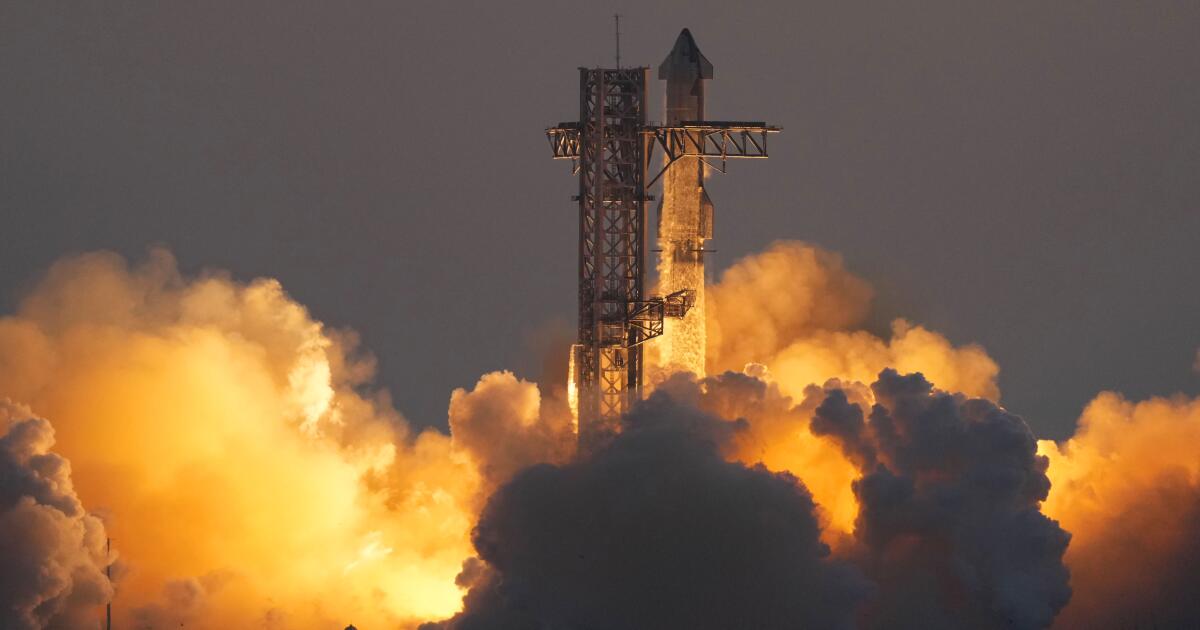Elon Musk’s SpaceX has positioned itself as a frontrunner in the private space industry, with bold aspirations that include landing humans back on the moon. This ambition ties closely with NASA’s Artemis program, which aims to establish a sustained human presence on the lunar surface and further deep-space exploration. However, as the company gears up for its next test launch of the Starship rocket, which stands as a significant advancement in aerospace engineering, it faces a range of challenges that could hinder its progress.
Overview of Recent Achievements
SpaceX’s most recent achievements with the Starship rocket are noteworthy. The company successfully executed a test flight last month, marking a significant milestone after a series of earlier launch attempts that did not go as planned. The launch demonstrated the coordination of the Starship spacecraft and its Super Heavy booster, achieving a controlled flight and encouraging observations from stakeholders in the industry. Musk himself celebrated the achievement on social media, acknowledging the hard work of the SpaceX team.
Significance of Starship for Artemis
The importance of these flight tests cannot be understated, especially considering they relate closely to NASA’s Artemis mission. SpaceX is developing a lunar lander version of Starship called the Human Landing System (HLS), which plays a crucial role in ferrying astronauts from a lunar orbiting capsule to the surface of the moon. To meet NASA’s timeline, SpaceX must prove that it can successfully refuel the lander in orbit, a complex maneuver critical for the mission’s success. However, as various experts have pointed out, the design and engineering challenges are substantial, further complicating an already ambitious timeline.
NASA’s current target for the Artemis III mission—expected to involve astronauts landing on the moon—has been set for no earlier than mid-2027. However, some members of a NASA safety panel have raised concerns regarding the readiness of the lunar lander and voiced doubts about meeting deadlines. Laura Forczyk, an expert in the space industry, indicated that delays are often inevitable in human spaceflight and predicted a later launch, potentially extending into 2030.
Challenges That SpaceX Faces
Besides technology-related challenges, regulatory and environmental hurdles also threaten to impede SpaceX’s planning and operations. The company seeks to ramp up its Starship test flights at its Texas launchpad and expand operations at Vandenberg Space Force Base in California, where Falcon 9 rockets are routinely launched for both commercial and military missions. Environmental groups have sued to halt increased launch frequencies due to concerns over ecological impacts, and these legal battles threaten to complicate operations.
Additionally, SpaceX recently faced a regulatory requirement to pay nearly $500,000 after allegations surfaced regarding environmentally harmful practices following rocket launches. The company’s ongoing commitment to addressing environmental concerns in its launch operations will be crucial not only for regulatory compliance but also for public perception.
Future Plans and Opportunities
Despite these challenges, opportunities abound for SpaceX, particularly concerning its growing Starlink satellite network. The company has launched nearly 10,000 Starlink satellites to enhance global internet access, and its future plans involve utilizing Starship to deploy tens of thousands of additional satellites. The capability of Starship—which can potentially launch up to 150 metric tons—offers a more efficient pathway for expanding the satellite constellation when compared to current Falcon 9 capabilities.
Furthermore, SpaceX’s recent acquisition of wireless spectrum puts it in a unique position to potentially provide mobile communications services. This endeavor may see the company collaborate with existing telecommunications firms to cover underserved areas, particularly in rural locations where connectivity is limited. The long-term vision involves not just payload capability but also offering mobile services through a combined effort with chipmakers and telecom providers, which could reshape how consumers access mobile networks.
Conclusion
As SpaceX progresses with its ambitious goals of lunar exploration and satellite deployment, it finds itself at a critical juncture where technological innovation meets regulatory scrutiny. The dual goals of contributing to NASA’s Artemis program and profoundly enhancing global connectivity through Starlink are laden with complexities that the company must navigate. While the recent successes offer a beacon of hope, they come alongside a reality check on the hurdles the company continues to face.
Ultimately, SpaceX’s ability to adapt and overcome these challenges will determine its trajectory in the ever-evolving landscape of space exploration and commercialization. For now, the focus remains on preparing for the next Starship test launch, which, if successful, could advance both SpaceX’s and humanity’s ambitions beyond Earth.








